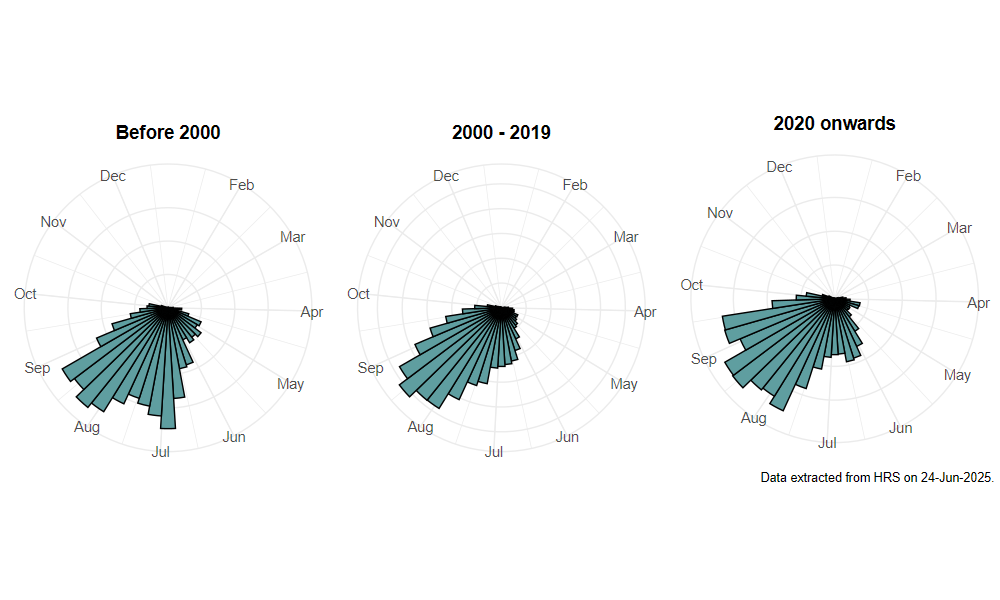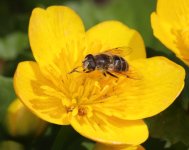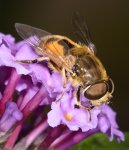Eristalis arbustorum (Linnaeus, 1758)
Identification
Identification difficulty = 2. ![]()
![]() according to Ball & Morris, 20241
according to Ball & Morris, 20241
Biology
The larva is of the 'long-tailed', aquatic type, and is associated with shallow standing water including wet, decaying organic matter around ponds and ditches, farmyard manure heaps and silage runoff. Adults are usually found visiting flowers in open situations such as woodland rides, hedgerows, meadows, road verges and urban wastelands. It is a frequent visitor to gardens.
Flight period
The following plots show the number of unique records per week excluding those reported to be of immature stages.

Distribution
This is a very widely distributed species that is almost certainly occurs more widely in north-west Scotland than records suggest.

Trends
The following plots show the Frescalo TFactor vs year and a map of the rescaled frequency (all records) for the species.
-
Ball, S., & Morris, R. (2024). Hoverflies of Britain and Ireland. WILDGuides (3rd ed.). Oxford: Princeton University Press. ↩

